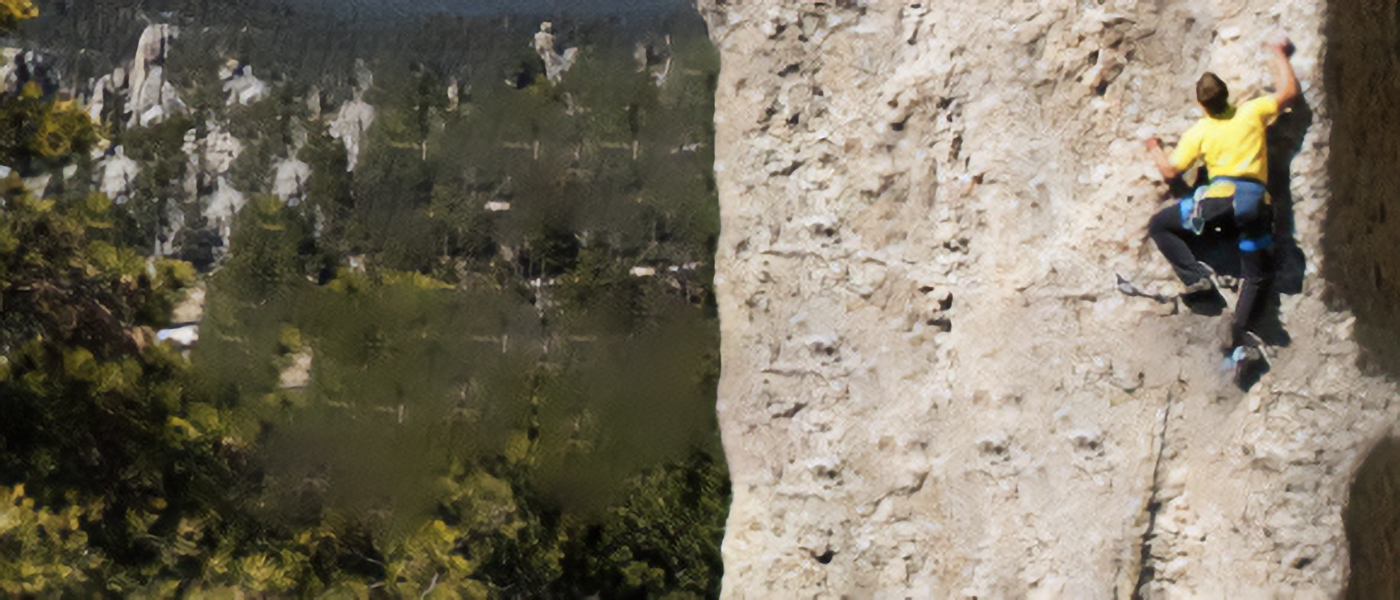Most consider climbing an extreme sport that’s only accessible for elite athletes in peak physical condition. While the sport does pose greater risk than others, climbing doesn’t actually require above average fitness to get started. Beginners can enjoy themselves and the great outdoors with basic safety guidelines and climbing technique — the rest will fall into place with practice and experience.
Learn Technique First
Luke Kretschmar, a Registered Nurse at Custer Hospital, says, “beginners don’t need to worry about training specific muscles so much as learning solid technique. I would recommend starting off in a gym to learn basic movements.”
Luke has been featured in local and national climbing publications such as “Rock and Ice” and “Climbing Magazine.”
This approach has two benefits — first, there are professional climbers and guides who teach the basics of the sport, and second, climbing walls are controlled environments that will make sure beginners don’t encounter obstacles they aren’t ready for. When you’re ready to go out, Luke says, “hire a guide service the first time so you learn how to be safe.” Going with others ensures a safe climbing experience, but also teaches a variety of techniques based on the style of each individual climber.
Start Out Right
Like any sport, warming up and stretching prior to climbing is important. Short, tight muscles can restrict blood circulation, which limits range of motion, power and strength. Stretching prior to climbing can prevent this, and practicing a basic yoga routine on nonclimbing days will keep the muscles limber. Increased flexibility also allows your muscles to work more efficiently; when your working muscles tire, the antagonist — or opposite — muscles will take some of the pressure off. For example, as your quads begin to tire, your hamstrings will naturally take on some of the load. Before heading to the gym or the rockface, be sure to get in 10–15 minutes of light cardio, do dynamic stretching to warm your entire body up and start your climb on easy, non-technical terrain.
Scott Burry, M.D., Emergency Medicine at Monument Health Spearfish Hospital, is an avid climber in his spare time. “Most people think climbing is all upper body but that’s not true. Climbers rely more on position on the rock and good footwork. Stamina is important; the muscles in your legs and feet will keep you going longer than trying to hang on with just your arms. Finger strength is also important, but go slow. Muscles grow faster than tendons, so your fingers won’t be ready to go as quickly as your arms and legs. Doing technical climbs or using hang boards before you’re ready can injure your fingers, which can easily set you back for months at a time.”
As you gain strength and confidence in your climbing skills, you can adjust your regular workout routine to help you get to the next level. While it may seem like upper body strength is the name of the game in climbing, it’s more important to have a solid lower body and core. Climbers need good footwork for positioning on a rock or climbing wall, and rely on leg stamina to support their entire body throughout the climb. Strengthening your lower front and back core will help you keep your feet properly positioned in tricky terrain. Workouts like yoga and bodyweight training are great for building a solid core, and are easy to do without having to go to the gym. Bolstering these muscles will advance your climbing, but also improve your posture and reduce back pain by stabilizing your spine.
Looking for stretches to improve your climbing? Try adding these three yoga poses to your routine.
Show More 
Downward-facing dog pose: Stretches your hamstrings, lower back and shoulders. Start on hands and knees on the floor, with knees shoulder-width apart and arms straight. Push into your palms and raise your hips up and back while straightening your legs. The key is to lengthen your spine — don’t worry if your legs are bent or feet aren’t flat on the floor.
Butterfly pose: Opens your hips and stretches your inner thighs. While sitting, bring the soles of your feet together in front of you and drop your knees to the sides. Grab your ankles or toes with your hands, and as you exhale, relax your hips and engage your glutes to draw your knees toward the floor.
Boat pose: Strengthens your abs and hip flexors while working on balance. Sit with knees bent and feet flat on the floor. Rock back to balance on your tailbone and lift your heels off the floor, holding your arms straight in front of you. Keep your chest high and your back straight. When you’re balanced, straighten and lift your legs until your thighs and torso form a 45-degree angle.
Go Beyond the Gym
Rock climbing is a great way to explore and enjoy nature, and with its inclusion in the Summer Olympics for the first time this year, its popularity will only increase. Even if it seems intimidating starting out, Luke says, “Good technique will help prevent injuries, and getting out and climbing as much as you can will build up those muscles and tendons. Most of all, have fun and enjoy the beautiful Black Hills.”

